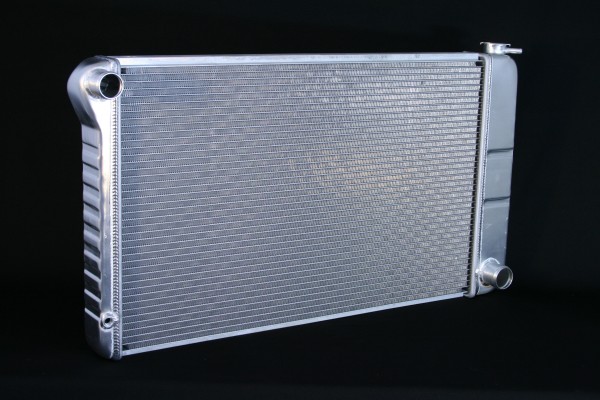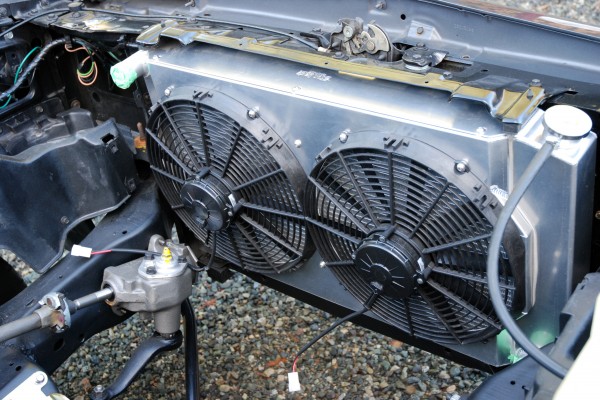It’s no big secret that big horsepower means increased heat. But high performance engines, like other internal combustion powerplants, aren’t really all that efficient. Roughly one-half of the total heat energy produced by an engine is not put to work, but simply transferred back to the cooling system. If your cooling system—especially your radiator—is not up to snuff, that heat won’t be properly dissipated to the atmosphere. That can leave you stuck on the side of the road with coolant burbling out of your radiator.
Here’s what happens to the coolant inside your radiator. As the coolant approaches its boiling point (for example, the boiling point of plain water at sea level is 212 degrees F), internal pressure begins to build. Since the cooling system is closed, the pressure continues to build without any opportunity to escape. As that pressure increases, so does the coolant’s boiling point.
If coolant temperature continues to rise and pressure increases past the radiator cap’s pressure rating (measured in pounds), the radiator will boil over and makes a mess. If the radiator boils over when you’re on the throttle and coolant gets under the tires, you know what happens next.
The Radiator Explained

The actual number of fins on the radiator is very important. As a rule of thumb, a conventional radiator will normally have 8-14 fins per inch. When more fins are added, the radiator can dissipate more heat to the surrounding air. The downside of more fins is the radiator is more easily plugged with bugs, dirt, and other gunk that reduce its efficiency.
Aluminum vs. Copper/Brass
Most modern radiators are made from aluminum. An aluminum radiator is more efficient and weighs up to one-third less than a comparable copper/brass radiator of the same dimensions. The main reason for aluminum’s greater efficiency is the ability to use wider tubes in the core. Larger tubes mean more tube-to-fin contact surface area (up to 20 percent over copper/brass), which provides better heat dissipation. That’s why an aluminum radiator with two rows of tubes can out-cool a copper/brass equivalent with four rows of tubes by as much as 30 degrees F.
That’s not to say there isn’t a place for a copper/brass radiator. They’re a must if you are restoring a classic vehicle or a 1960s-70s muscle car to stock or near-stock specifications. But if you’re turning up the horsepower wick, aluminum is where it’s at. And with the selection available today, there’s an aluminum radiator for just about every vehicle.
For even more information on selecting a radiator, be sure to read our How to Choose a Radiator post.









Why is it so hard to find a brass and copper radiator? I have a 1984 Grand Marquis ls & I’m having a really hard time with finding one. Does anyone have any ideas?
It basically comes down to cost and weight savings. This article does a great job of explaining further: http://advancedradiators.com/plasticaluminum-vs-copperbrass-radiators-which-type-is-better-2/
i have a m715 kaiser gladiator Jeep (that’s a mouthful)I am doing a build with an L3 crate motor replacement. Im going to be using the truck daily with the engine tricked out to about 500 hp. I wanna be able to keep it cool in all conditions. I do some rock climbing and I wanna do some desert overland stuff too. so i need a radiator with the widest range of possibilities. i need to be rugged as well. can i get something custom made or do you guys have something in mind thats already made that might fit my range of uses? thanks for the help. get back to me when you can.
What would I need for a 1969 Camaro 396 Big Block with a non clutch fan & 1” spacer closer towards the radiator . Thanks Dave / 4spd
What would need for a small Bloch Chevy 69 chevelle size radiator